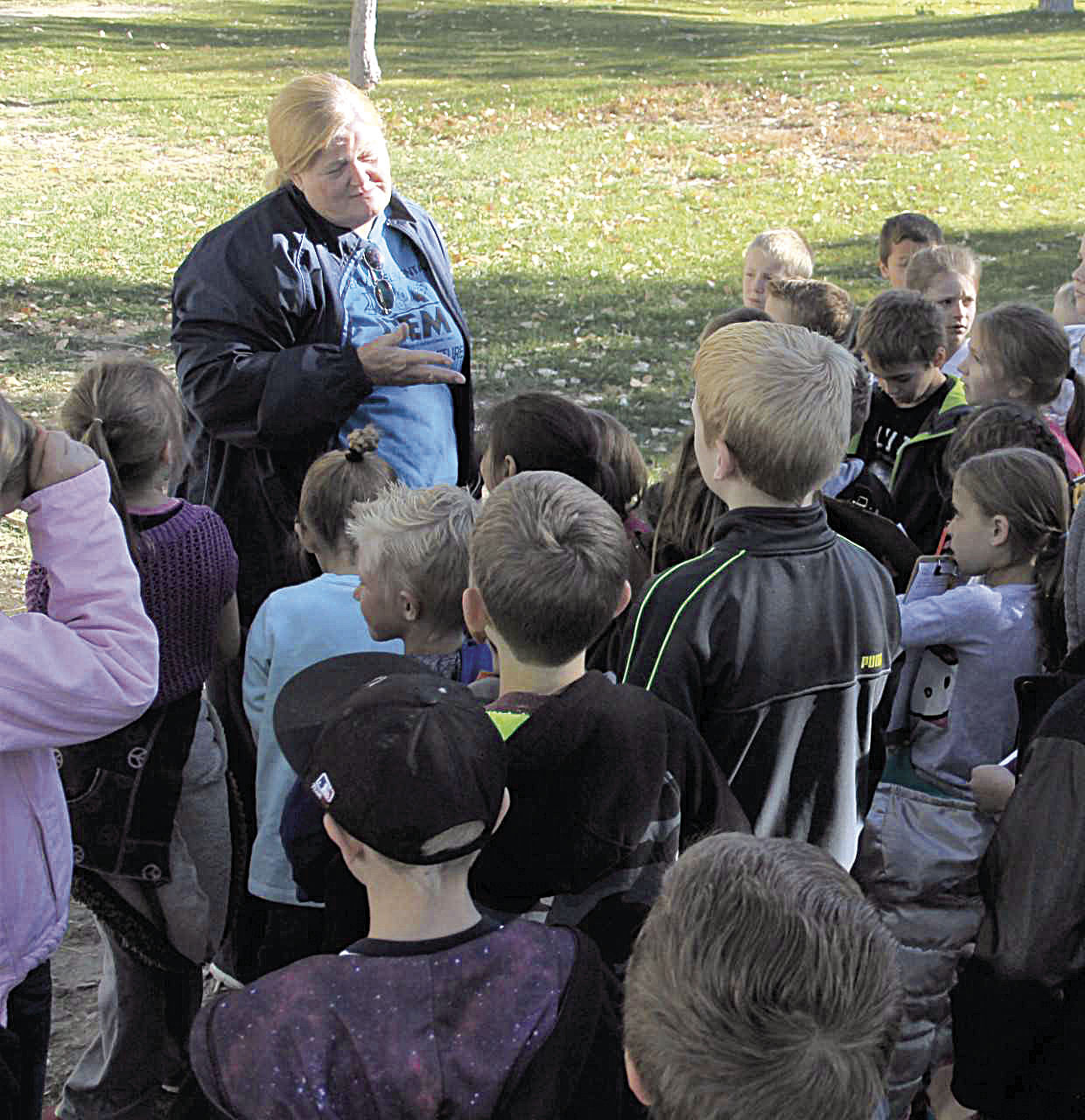The Utah State Board of Education officially designated Creekview Elementary School as a Science, Technology, Engineering and Math (STEM) school last May, making it the only school in the state east of Highway 89 to earn the distinction. On Wednesday, the special STEM van arrived at the school to spark student involvement.
“We are excited about this designation,” said Creekview Principal John Thomas. “We have worked hard, and it has been a long process to get to this level.”
USBE, in partnership with the Utah STEM Action Center, developed the Utah STEM Schools Designation program in 2016 to better define and standardize the elements that create a comprehensive STEM learning environment for Utah students.
The program furthers schools’ opportunities to engage in STEM-related discussions with faculty and community partners to develop strong instruction for students to prepare them for college and careers.
STEM school designations last for five years.
The school has a designated STEM coordinator, Leigh Ludington, a former teacher at the school. She worked on many kinds of science and technology projects during her years in the classroom, long before STEM was even thought of.
“When some people look at STEM they think of it as open ended,” said Ludington. “Many think it just addresses science, but it addresses critical thinking skills. That is what these students need to learn. The years of memorizing facts and spitting them back to us are over. They need to understand how things work.”
“When looking over projects for the school, I examine what is in the core, particularly for fourth and fifth grades,” she said. “We want to work on things that they are going to be tested on.”
She said that science standards have not been put together for elementary schools in Utah yet, but looking at what the standards are for middle school students gives a clue as to what should be done in the elementary grades.
“Students need to understand a whole system, not just one piece of something,” she said. “Everything needs to be integrated more.”
{{tncms-inline content=”<p><strong>"The years of memorizing facts and spitting them back to us are over. They need to understand how things work."</strong></p> <p><strong>Leigh Luddington</strong></p> ” id=”6a76b170-4b71-4c4b-807a-2292e519114e” style-type=”quote” title=”Pull Quote” type=”relcontent”}}
The major STEM project for the coming year may begin in January when a state agency and a private ecology group will help the school to get started on an interesting project.
“One of the things we have arranged, although it is not finalized yet, is that through the Division of Wildlife Resources and Trout Unlimited there is going to be a tank put in the school to raise trout,” she said. “Right now it looks like it will be placed in the library. Then next May the school will be able to release the fish that are raised in one of the state’s local fishing ponds.”
Students responsible for care
While Trout Unlimited is paying for the tank, “Students from all classes will help care for the fish and we will establish a rotating schedule to do that,” she said. “Once we have the tank we will do this every year. I also want to use it to work on other science projects.”
She suggested that soil erosion, water quality, water diversions and structures can be included in the education process as it relates to the fish and the ecology of the tank. There will be open ended thinking for kids to do when it comes to dealing with the different aspects of maintaining a healthy water environment.
“It will be what most kids who are adults today did with their friends while they were playing outside,” said Ludington. “We have to recognize that what they will be doing is figuring things out, being experimental about things they work on. That takes some time to do. In some ways we are recreating what children used to do on their own.”
Many children don’t get the same education from play that they used to, and in some cases students need to understand such basic things as that water runs downhill. There are lessons that are involved in STEM to teach children how water acts in certain situations based on geography.
“STEM is a way of thinking that gets you to think creatively, research the concepts being taught and solve the problems that arise,” said Ludington. “It is a process where we learn to encourage students to ask questions in a safe environment where it is okay to ask questions, and it is safe to make mistakes. This is how we learn.”
“The STEM way of learning is based on real world applications,” said Thomas. “It is comprised of problem-based learning, project-based learning and place-based learning and is a great way to get kids into technology.”
Schools | STEM blossoms at Creekview

STEM coordinator Leigh Luddington talks with students.
